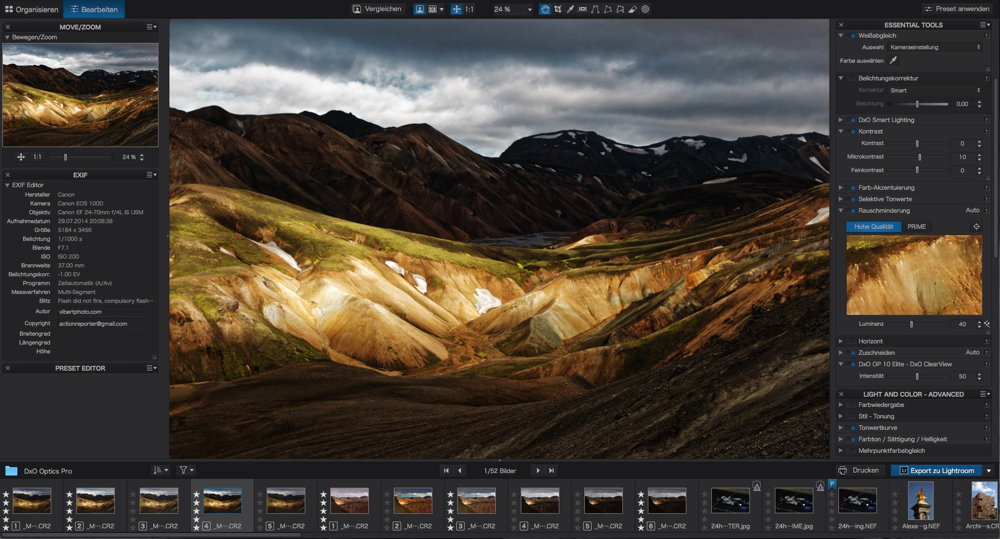

Initially, it’s best to uncheck the automatic application of presets.

When you first open OpticsPro 11, go to DxO OpticsPro 11>Preferences.

Here’s a quick walk through getting started with OpticsPro 11 and how to work with PRIME. DxO claims PRIME processes up to four times faster than the previous version, and, yes, it’s fast. PRIME 2016 has been improved in a number of areas, including smoother bokeh transitions, better details in shadow areas, and more faithful rendering of original colors. While there are a number of options to deal with image noise, DxO PRIME is especially effective at minimizing noise while maintaining details.

Today’s cameras can handle low light/high ISO conditions better than ever before, but high ISO image noise is still an issue, and images captured at high ISO with older cameras are in need of a helping hand. Essentially, the software analyzes the image for similarities among pixels and, when that phase is completed, it utilizes that information to differentiate noise from fine details in order to process the image. As the name implies, PRIME denoising is available only for Raw images. OpticsPro software has always been known for its noise reduction capabilities, which DxO calls PRIME (Probabilistic Raw IMage Enhancement). The DxO suite of tools uses the analysis of the imaging characteristics of camera equipment to correct any inherent flaws in images generated by the sensor or lenses used.ĭxO OpticsPro 11 is the newest iteration of the company’s image-enhancing suite, and it comes packed with a variety of tools to correct problems found in more than 30,800 combinations of lenses and cameras and to perform detailed image editing. That information is not gathered for consumer information but to power its image-editing software. DxO is best known for, a website that publishes a vast database of quantitative measurements for thousands of lenses and cameras.


 0 kommentar(er)
0 kommentar(er)
